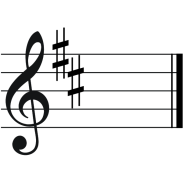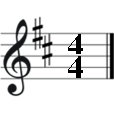| This Week’s Topic… | |||

Best viewed in
|
Bagpipe Music - a Primer The bagpipe carries a long and honorable history stretching back to the beginnings of civilization as one of the oldest instruments created and played by early humans. Most likely, the music had its beginnings in ancient Egypt where a simple chanter and drone were played together. These were later attached to a bag made of skin and fitted with a blowpipe making a primitive form of the instrument we have today. This kind of Bagpipe was played by the Greeks and the Romans, and eventually spread throughout Europe, carried first by the Celts and then by the Romans on their invasions. (see the May 2010 Issue of OPD for an abbreviated history of the bagpipes) In Britain, its history and fate, except in the Highlands of Scotland, followed the same pattern as on the continent. It came with the Celts and the Romans and flourished for centuries as the instrument of the common people. It was played at fairs, weddings, open air dancing, pageants and all sorts of processions and merry makings. It fitted into the clan system then operated in the Highlands, the chiefs of the clan having their own – in many cases a hereditary office – and colleges, of which there were several, were set up for the teaching of bagpipe playing. In these colleges was developed the "Ceol Mor", or "Piobaireachd (see the July 2010 issue of OPD for an explanation of Piobaireachd). Piobaireachd was originally passed from one generation to the next using an oral system for teaching the repertoire, called canntaireachd. This was eventually replaced by the classical European system of music notation. Without getting into a lot of music theory, music notation uses a five-line staff. Pitch is shown by placement of notes on the staff and duration is shown with different note values and additional symbols such as dots and ties. The lines are (from bottom to top) E G B D F and the spaces are F A C E. Notation is read from left to right.
The bagpipe scale consists of nine (9) notes…that’s it. The limit of nine notes (along with the key) is why some tunes cannot (and/or should not) be played on the bagpipes. Unique to bagpipes are the embellishments that separate the notes in a tune. There are single grace notes, doublings and half-doublings, and combinations of grace notes including throws, shakes, birls, lemluaths, taorluaths, crunluoths, and edres. A bagpipe music manuscript for the familiar tune, Scotland the Brave, is shown on the following page. Music written for the Great Highland Bagpipes falls into one of three categories: · Ceol Mor—the Great Music: a repertoire consisting of salutes, gathering tunes, marches, cumha (laments), and brosnachadh (incitements to battle) · Ceol Meadhonach—the Middle Music: slow airs and jigs · Ceol Beag (or Ceol Aotrom)—the Little Music: marches, strathspeys, reels and hornpipes
Ceòl
Meadhonach Generally, airs are graceful, elegant, polished, often strophic songs (i.e., songs having the same music for each stanza), typically dealing with amorous subjects. But many are lively and animated, full of rhythmic subtleties, while others are deeply emotional works that gain much of their effect from bold, expressive harmonies and striking melodic lines. The jig is a popular tune-type within the traditions of Irish dance music; second only to the reel, and popular but somewhat less common in Scottish country dance music.
Ceòl Beag
A march, as a musical genre, is a piece of music with a strong regular rhythm which in origin was expressly written for marching to. Marches can range in tempo from slow to quick. A Retreat March is a form of departing music. It is believed that the term comes from the French Retraite meaning retire or return to bed in the evening. Strathspey refers both to the type of tune, and to the type of dance usually done to it. It is named after the Strathspey region of Scotland, in Moray and Badenoch and Strathspey. It is similar to a hornpipe but slower and more stately, and containing many snaps. These days there are at least four, some would say seven, varieties: the bouncy schottische, the strong strathspey, the song or air strathspey, all three of which can be enjoyed for dancing, and the Competition strathspey for the bagpipe, primarily intended as a display of virtuosity. The reel is a folk dance type as well as the accompanying dance tune type. It is one of the four dances which comprise Scottish country dancing, the others being the jig, the strathspey and the waltz. It is very rhythmic and very quick tempo. It is believed that the reel was originated from an old Irish dance called the Hey in the mid 1500's. Today many Irish reels are supplemented with new compositions and by tunes from other traditions which are easily adapted as reels. It is the most popular tune-type within the Irish dance music tradition. The term hornpipe refers to one of several dance forms played and danced in Britain and elsewhere from the late 17th century until the present day. This type of hornpipe is generally thought of as a sailors' dance. All bagpipe music is performed from memory; adding to the complexity and art of the instrument. Building a repertoire of tunes in each of the genre is a lifelong endeavor. When competing, bands are placed into one of five grades with 1 being the uppermost. The Omaha Pipes and Drums compete in Grade 4. Each grade has an associated minimum number of performers (pipers and drummers) and music requirements. For pipe band competitions, the music requirements fall into one of three categories; MSR (March/Strathspey/Reel), QMM (Quick March Medley – any number of quick marches played in succession), or Medley (minimum of four different tune categories). The grade of the band determines the tune requirement and time limit. The selection of tunes to meet the requirements is up to the individual band. Solo players are graded as professional, amateur, or novice. The Amateur Grade is further divided into Grades 1 - 4. The Novice Grade is divided by age; Senior Novice (30 years and older) and Junior Novice (29 and under). The music requirements are determined by grade and fall into four categories; March, S/R (Strathspey/Reel), H/J (Hornpipe/Jig), and 6/8 Mar (6/8 March). Similarly, Piobaireachd is graded as professional or amateur with the amateurs being divided from into four grades. |
||


